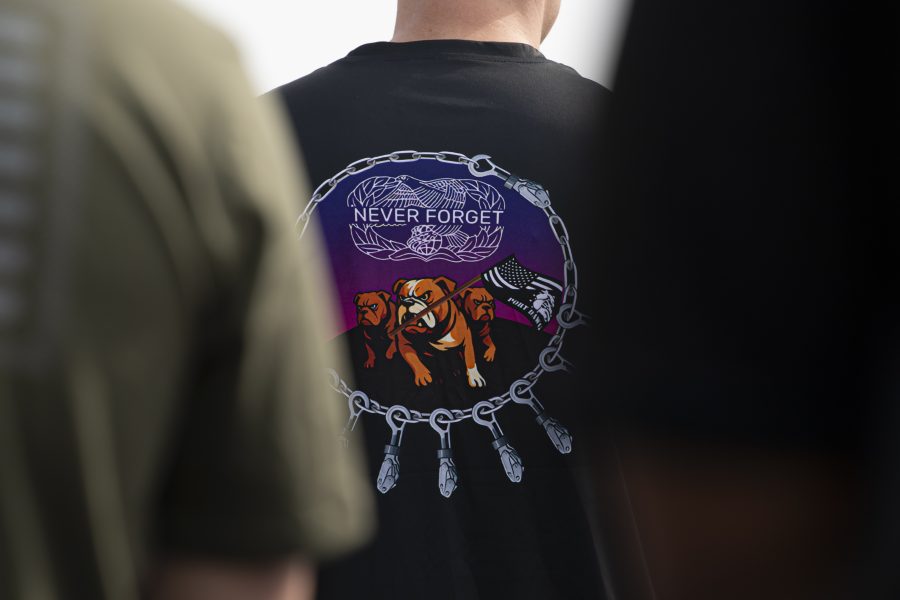Air Force Chief of Staff Kenneth S. Wilsbach is allowing Airmen to wear unit morale T-shirts on Fridays and aircrew to wear nametags with their callsigns daily. The morale-boosting gesture is one of his first official acts as Chief and comes at a time when the Pentagon is cracking down on personal appearance standards.
The interim changes to the service’s Dress and Personal Appearance standards is intended to “reaffirm who we are as a United States Air Force—a team bound by history, strengthened by pride, and united in a shared purpose. Fight’s On!” Wilsbach wrote in a Nov. 10 memorandum that was posted on the unofficial Air Force amn/nco/snco webpage.
An Air Force spokesperson confirmed the memo is authentic. The changes will take effect Nov. 14.
In a hat tip to casual Friday in civilian culture, Airmen “may wear colored T-shirts on Fridays with utility uniforms,” provided they are not deployed, participating in an exercise, or assigned to a joint or Space Force unit, according to the memo.
“The color must reflect the authorized heraldry and heritage colors of the member’s assigned unit,” Wilsbach wrote. Wing commanders will maintain a list of approved colors for their wing. Commanders may authorize Airmen of supporting units to wear their assigned unit’s T-shirt.
It’s unclear if the uniform blouse must be worn over the colored T-shirt. The Air Force’s official guidance governing Wilsbach’s changes will be forthcoming, according to the memo.
Wilsbach, an F-15 Eagle pilot, also authorized pilots, boom operators, and other aircrew members to wear callsign nametags daily with flight duty and desert flight uniforms, the memo states.

Typically, aircrew members in operational squadrons have worn callsign nametags only on Fridays. Officer nametags “may incorporate the member’s callsign or first name followed by last name,” according to the memo. Enlisted personnel “will incorporate their rank, followed by the member’s callsign and last name.” Wilsbach directed commanders to ensure that nametags are in “good taste and reflect proper military order, discipline, morale, and professional image.”
Wilsbach’s morale perks allow Airmen a little personality amid a broader push to tighten up dress and appearance standards. Defense Secretary Pete Hegseth has been leading that charge, making it a central focus in his Sept. 30 address to senior leaders across the military.
To comply with Hegseth’s direction, the Air Force recently released stricter new standards for mustaches and sideburns. The service also has until Nov. 30 to present its plan to comply with Hegseth’s directive that service members with religious accommodations to grow facial hair be deemed nondeployable, a career-ending status for Airmen who go more than a year without deploying.
Within the past year, the service has also released new appearance standards cracking down on nail polish colors, eyelash length, boot height, and how sleeves can be rolled in Operational Camouflage Pattern uniforms.
Wilsbach wrote that authorizing the wear of callsign nametags and unit morale T-shirts is intended to increase pride in the uniform.
“Our uniform reflects years of Airmen bound by a proud heritage and united in shared purpose,” Wilsbach wrote. “It connects us to those who came before and signals professionalism, discipline, and continued unity in today’s force.”


